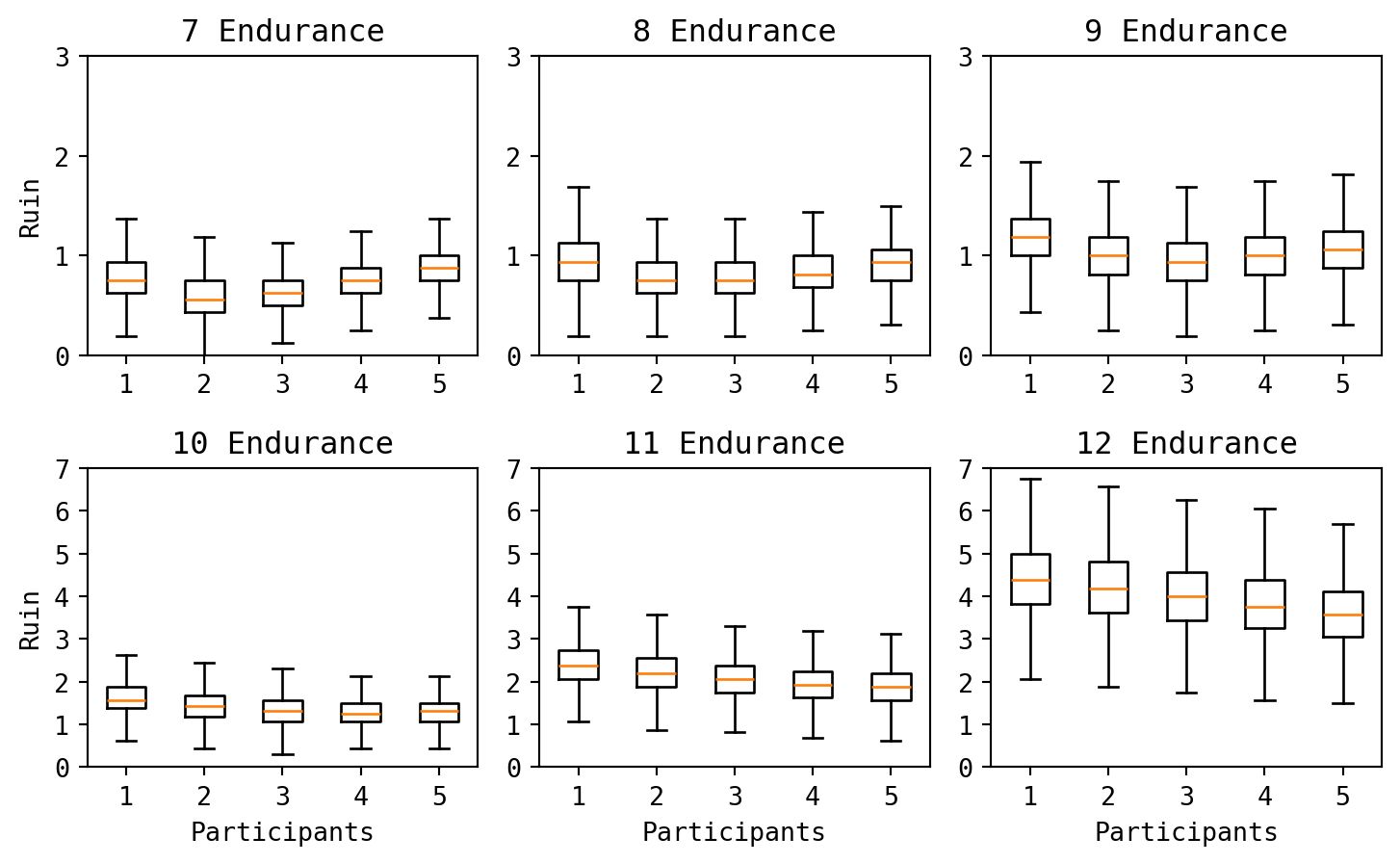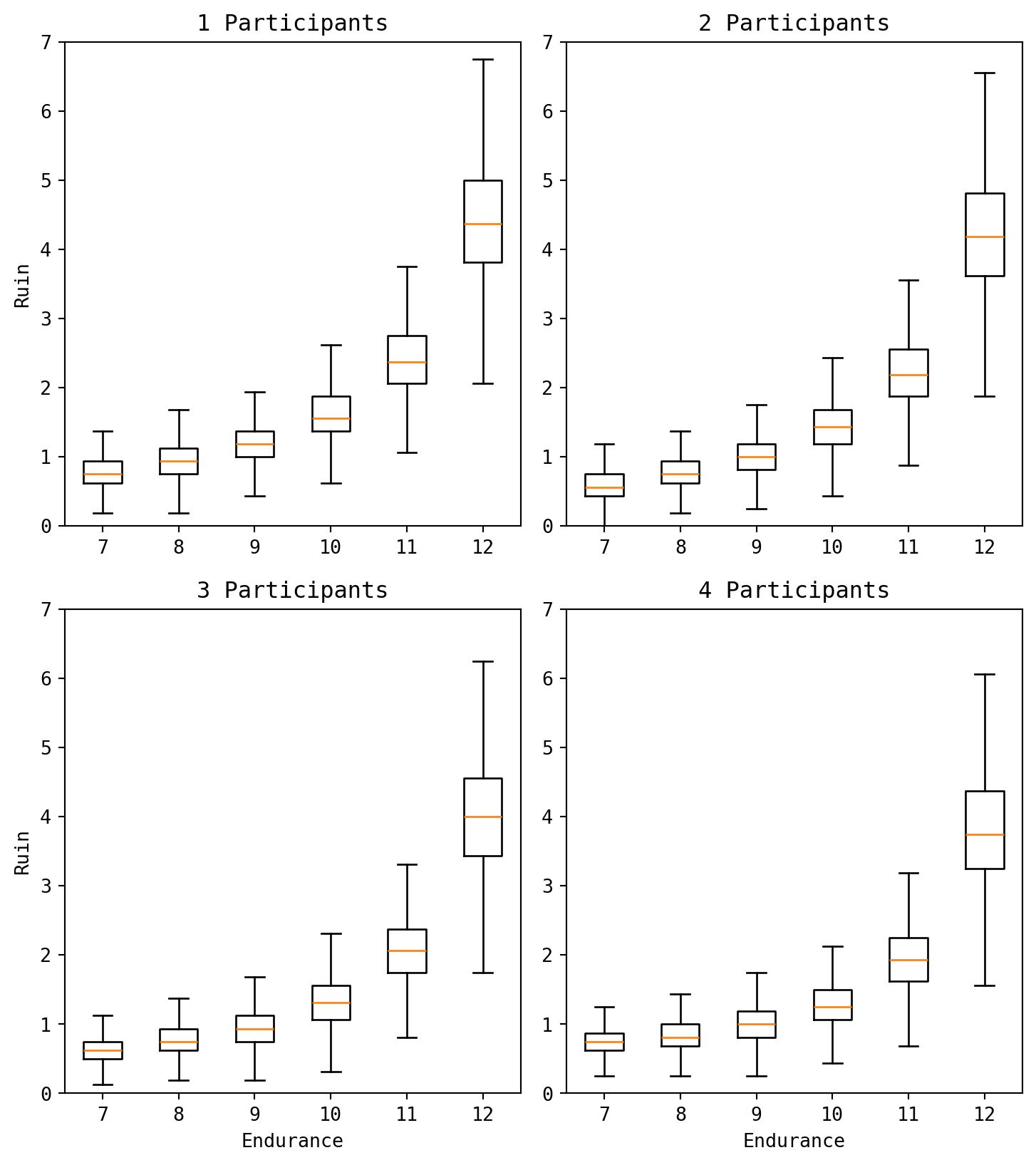Breaking down Trophy Gold combat outcomes
The method: I simulated millions of Trophy Gold combat encounters with different numbers of participants and enemy endurance levels. Then I recorded the ruin experienced by each character and made some graphs.
- You can read the Trophy Gold combat rules in the Trophy SRD.
- Plain combat in Trophy Gold is easy to model because every participant contributes the same attack and risks the same ruin.
- When I say I'm modeling "plain" combat I mean "all participants join the first round and fight to the death".

Participant count doesn't matter too much: The difference between the expected ruin taken by a participant in a solo fight compared to a whole party fight doesn't differ by that much. This is because damage is based on the number of dice being rolled more than the number of rounds being fought. A dice pool for a solo participant after 2 rounds has the same amount of risk as a single round of combat with 3 participants.
- This effect can be seen in the slightly-less damage incurred by 2 participants compared to 5 against a 7-endurance enemy; the extra dice become a liability for lower targets.
- This ignores the "defenses" of enemies where they can give conditions to attackers, which is where the risk of prolonged combat can be enforced.
- This means endurance levels within an incursion don't need to be adjusted depending on the number of players.

Combat gets rapidly more dangerous from 10 to 12 endurance: A player engaged in combat with a 10-endurance enemy can expect 1-2 ruin, jumping to 3-5 ruin for 12-endurance; the variance grows as well.
- GMs should make sure they have enemies with exciting defenses to avoid needing to rely purely on the combat.
- An 8-endurance enemy with some cool defenses is more exciting than an 11 without.
Some technical details: This was all done as a Python script that implemented the Trophy combat roll rules and ran a ton of simulations. I did some kernel density estimation to make a continuous distribution for plotting. I'm not great with statistics so the specific parameters were mostly based on vibes.
